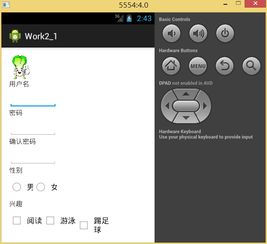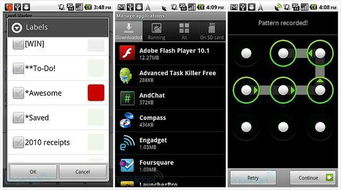来源:小编 更新:2025-01-24 11:32:48
用手机看
你有没有想过,为什么你的安卓手机屏幕上的图标都是横着排的?是不是觉得这种布局特别方便,一眼就能找到你想要的应用?今天,就让我带你一起探索安卓系统的横向布局,让你对手机界面设计有更深的了解!

在安卓系统中,想要实现横向布局,首先得了解一个叫做“线性布局”(LinearLayout)的家伙。它就像是一个神奇的魔法师,可以让你的组件在屏幕上横着排成一排。
想象你正在搭建一座桥,桥上的每一块石头都代表一个组件。而线性布局就是那座桥,它可以让这些石头按照你的意愿,横着或者竖着排列。

想要让你的组件横着排,你只需要对线性布局施展一个魔法咒语——设置`android:orientation`属性为`horizontal`。这样一来,你的组件就会像一条长龙,依次横躺在屏幕上。
```xml
android:layout_width=\match_parent\ android:layout_height=\match_parent\ android:orientation=\horizontal\>

线性布局中的组件会按照你添加的顺序排列。如果你想让某个组件排在前面,只需将它放在线性布局的顶部。就像排队买票,先到的人自然就能排在前面。
组件的大小可以通过`android:layout_width`和`android:layout_height`属性来控制。如果你想让所有组件大小一致,可以将它们设置为`wrap_content`,这样组件就会根据内容自动调整大小。
```xml
android:layout_width=\wrap_content\ android:layout_height=\wrap_content\ android:text=\这是一个组件\ /> 至于组件之间的间距,可以通过`android:layout_margin`属性来调整。就像给组件穿上漂亮的衣服,让它们看起来更加和谐。 ```xml android:layout_width=\wrap_content\ android:layout_height=\wrap_content\ android:text=\这是一个组件\ android:layout_margin=\10dp\ /> 1. 权重分配:如果你想让某些组件占据更多空间,可以将它们设置为`layout_weight`属性。这样,当线性布局的空间发生变化时,这些组件就会根据权重分配更多的空间。 ```xml android:layout_width=\0dp\ android:layout_height=\wrap_content\ android:layout_weight=\1\ android:text=\这是一个组件\ /> 2. 嵌套布局:有时候,你可能需要在一个组件内部进行横向布局。这时,你可以在该组件中嵌套一个线性布局,然后按照上面的方法进行设置。 ```xml android:layout_width=\match_parent\ android:layout_height=\match_parent\> android:layout_width=\match_parent\ android:layout_height=\wrap_content\ android:orientation=\horizontal\> 3. 对齐方式:如果你想让组件在水平方向上居中对齐,可以将`android:gravity`属性设置为`center_horizontal`。 ```xml android:layout_width=\wrap_content\ android:layout_height=\wrap_content\ android:gravity=\center_horizontal\ android:text=\这是一个组件\ /> 通过以上这些技巧,你就可以轻松地实现安卓系统的横向布局,让你的手机界面更加美观、实用。 现在,你已经掌握了安卓系统横向布局的奥秘,是不是觉得手机界面设计变得简单多了?赶紧动手试试吧,让你的手机焕发出新的活力!五、横向布局的进阶技巧